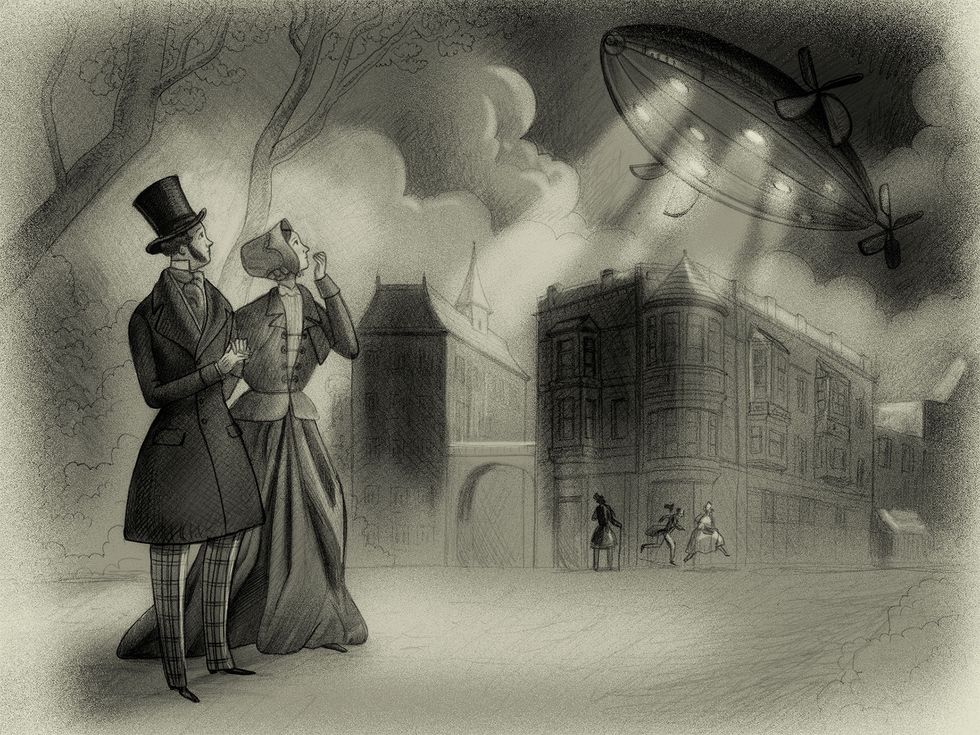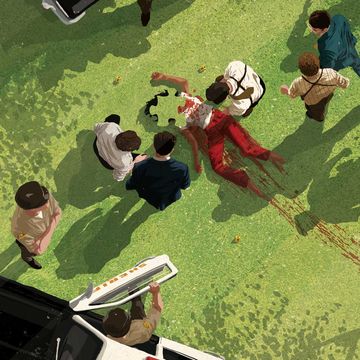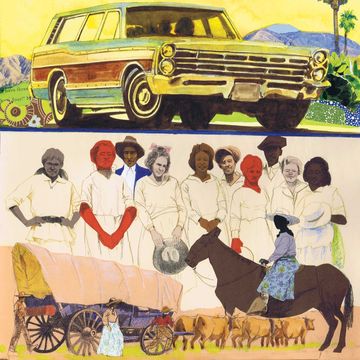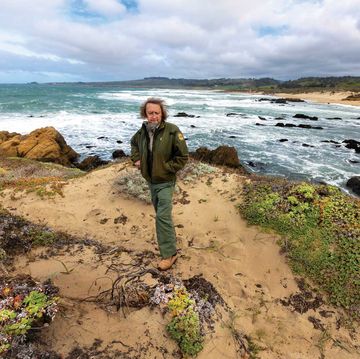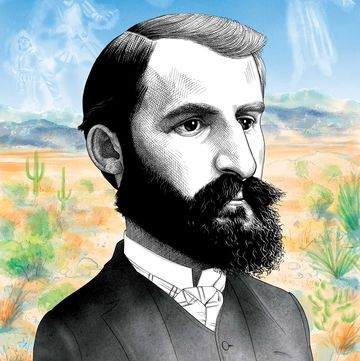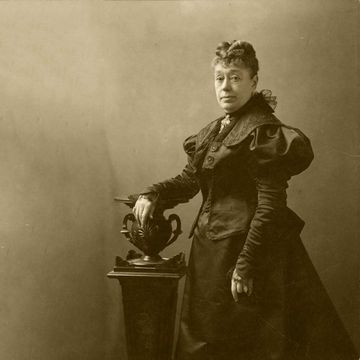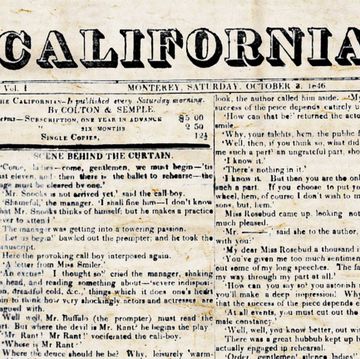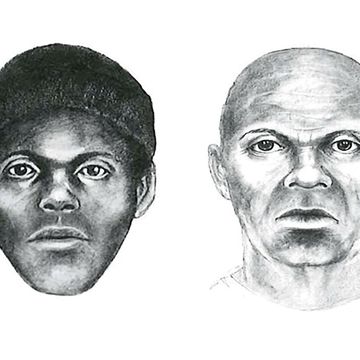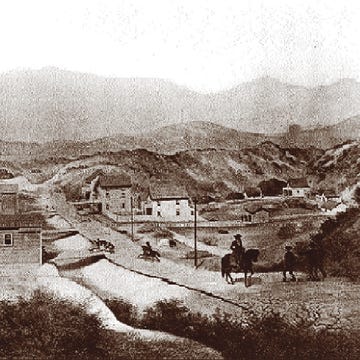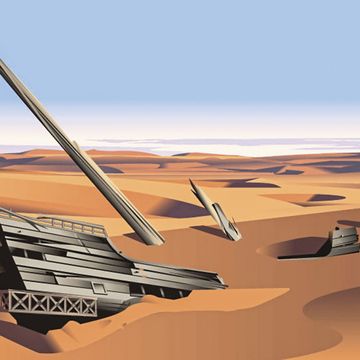The initial newspaper reports could not have been more dramatic.
“Last evening between the hours of 6 and 7 o’clock, in the year of our Lord eighteen hundred and ninety-six, a most startling exhibition was seen in the sky in this city of Sacramento,” commenced a front-page story in the Sacramento Bee, describing how hundreds of astonished people tumbled out of their homes to watch an enormous, slow-moving “airship,” surrounded by a blindingly bright light, floating through the sky on Nov. 17, 1896.
Witness M.T. Shelley, whom the San Francisco Call described as “a gentleman of undoubted veracity,” described the object as being about 25 feet wide and 150 feet long, with either giant wings or propellers, seemingly made of shiny metal. Some observers saw the dark outlines of four figures steering the aircraft.
A flurry of explanations emerged: a meteor, a large bird with a Chinese lantern around its neck, a swarm of lightning beetles. Each suggestion was quickly refuted. Manned balloons and blimps were still rudimentary, and the Wright Brothers and Kitty Hawk were still years away. There seemed to be only one plausible explanation.
Two days later, things got even stranger.
Col. H.G. Shaw told the Stockton Daily Mail that he and a companion were traveling in a horse-drawn buggy 50 miles south of Sacramento “when the horse stopped suddenly and gave a snort of terror.” They encountered three aliens and their hovering spaceship. According to Shaw, the naked seven-foot-tall extraterrestrials had large, shiny eyes and spoke with one another by “warbling.”
“One of them, at a signal from one who appeared to be the leader, attempted to lift me, probably with the intention of carrying me away,” Shaw said. But the aliens lacked the strength to complete the kidnapping. They returned to their spacecraft and whooshed away.
“Those we beheld were inhabitants of Mars, who have been sent to the Earth for the purpose of securing one of its inhabitants,” Shaw speculated. It apparently was the first-ever report of an alien abduction attempt.
After Shaw’s narrow escape, sightings of spaceships and aliens spread across the country. Over the next six months, more than 1,500 U.S. newspapers published stories of mysterious airships, often seen by thousands of witnesses, in what would later be called the Great Airship Mystery of 1896-97.
The San Francisco Call and others speculated that only a genius like Thomas Edison could be responsible for such an aircraft. But Edison summoned reporters to forcefully denounce “this supposed airship out west” and his alleged connection to it. He told the media: “I prefer to devote my time to objects which have some commercial value. At best, airships would only be toys.”
Edison’s denial burst the media bubble. His strong words, combined with revelations that many sightings were hoaxes, practical jokes or misidentified planets and stars, brought the sensation to an abrupt end.
No plausible explanation for the glowing airship over Sacramento has ever been accepted. Was it a local inventor’s primitive blimp? Or, if it was equipped with four fanlike propellers, searchlights, and flew at 1,000 or 2,000 feet, was it a sophisticated secret experiment underwritten by a 19th-century version of Elon Musk?
Or maybe, just maybe, as hundreds of eyewitnesses believed, could the Sacramento flying machine have come from outer space? This past winter, the Pentagon acknowledged that it had operated a secret program to investigate mysterious lights and unidentified objects in the sky. Maybe it’s time forthe Great Airship Mystery of 2018.
Blaise Zerega is Alta Journal's editorial director. His journalism has appeared in Conde Nast Portfolio (deputy editor and part of founding team), WIRED (managing editor), the New Yorker, Forbes, and other publications. Additionally, he was the editor of Red Herring magazine, once the bible of Silicon Valley. Throughout his career, he has helped lead teams small and large to numerous honors including multiple National Magazine Awards. He attended the United States Military Academy, New York University, and received a Michener Fellowship for fiction from the Texas Center for Writers.
